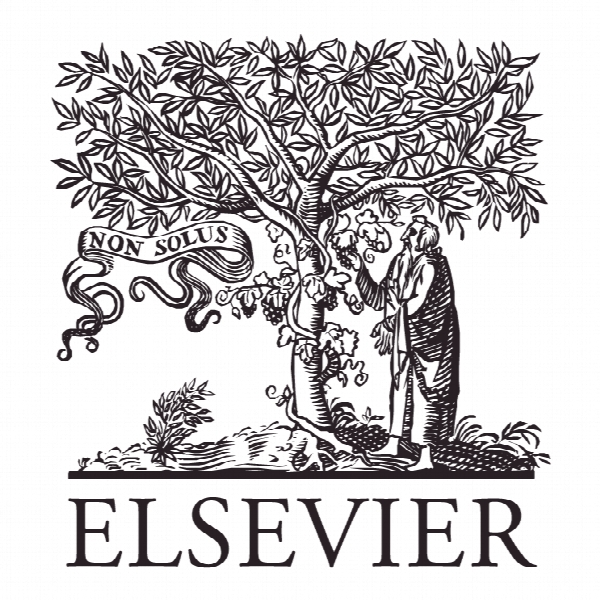خوش بینی و بدبینی در جمعیت عمومی: ویژگی های روان سنجی آزمون جهت گیری زندگی (LOT-R) Optimism and pessimism in the general population: Psychometric properties of the Life Orientation Test (LOT-R)
- نوع فایل : کتاب
- زبان : انگلیسی
- ناشر : Elsevier
- چاپ و سال / کشور: 2018
توضیحات
رشته های مرتبط روانشناسی
گرایش های مرتبط سنجش و اندازه گیری (روان سنجی)
مجله بین المللی روانشناسی بالینی و بهداشت – International Journal of Clinical and Health Psychology
دانشگاه Department of Medical Psychology and Medical Sociology – University of Leipzig – Germany
شناسه دیجیتال – doi http://dx.doi.org/10.1016/j.ijchp.2017.02.003
منتشر شده در نشریه الزویر
کلمات کلیدی انگلیسی Optimism; Pessimism; Factor structure; Measurement invariance; Descriptive survey study
گرایش های مرتبط سنجش و اندازه گیری (روان سنجی)
مجله بین المللی روانشناسی بالینی و بهداشت – International Journal of Clinical and Health Psychology
دانشگاه Department of Medical Psychology and Medical Sociology – University of Leipzig – Germany
شناسه دیجیتال – doi http://dx.doi.org/10.1016/j.ijchp.2017.02.003
منتشر شده در نشریه الزویر
کلمات کلیدی انگلیسی Optimism; Pessimism; Factor structure; Measurement invariance; Descriptive survey study
Description
Dispositional optimism is defined as a general tendency to expect positive outcomes (Carver & Scheier, 2014; Carver, Scheier, & Segerstrom, 2010). It is one of the resourceoriented variables that have gained increasing interest in recent years as part of the larger trend of finding new ways to supplement the traditionally deficit-oriented perspective of clinical psychology. Optimism is associated with differences in mental (Carver et al., 2010) and physical (Rasmussen, Scheier, & Greenhouse, 2009; Roy et al., 2010) health, quality of life (Gison, Rizza, Bonassi, Donati, & Giaquinto, 2015; Jiang et al., 2014; Kreis et al., 2015; Vera-Villarroel, Valtierra, & Contreras, 2016), life satisfaction (Jiang et al., 2014), adaptive coping styles (Nes & Segerstrom, 2006), recovery after severe illness (Scheier et al., 1999), and even mortality (Anthony, Kritz-Silverstein, & Barrett-Connor, 2016; Giltay, Geleijnse, Zitman, Hoekstra, & Schouten, 2004; Grossardt, Bower, Geda, Colligan, & Rocca, 2009). The Life Orientation Test-Revised (LOT-R) (Scheier, Carver, & Bridges, 1994) is the test used most often for assessing dispositional optimism. It has been translated to many languages and psychometrically tested in multiple studies, including tests of its dimensional structure (Cano-García et al., 2015; Glaesmer et al., 2012; Zenger et al., 2013), temporal stability (Saboonchi, Petersson, Alexanderson, Brandstrom, & Wennman-Larsen, 2016), and item response theory (Chiesi, Galli, Primi, Innocenti Borgi, & Bonacchi, 2013; Steca, Monzani, Greco, Chiesi, & Primi, 2015). The LOT-R has proved to be an independent predictor of later depression in the general population (Armbruster, Pieper, Klotsche, & Hoyer, 2015) and in cancer patients (Zenger, Brix, Borowski, Stolzenburg, & Hinz, 2010). Normative values of the general population are available for Germany (Glaesmer et al., 2012) and Colombia (Zenger et al., 2013). The test consists of two subscales, Optimism and Pessimism. Originally, the test was designed as a unidimensional instrument. However, the correlation between the subscales (which have been theoretically assumed to be substantially negative) proved to be weak in most empirical studies with coefficients of about r = -.20. Furthermore, confirmatory factorial analyses yielded markedly better fit indices for a two-factorial model compared to the originally designed one-dimensional model (Glaesmer et al., 2012; Monzani, Steca, & Greco, 2014; Zenger et al., 2013). Based on a sample of 906 Spanish participants, Cano-García et al. (2015) tested several models using CFA. They found that the one-factorial model was better than the model with two independent factors (optimism and pessimism), but that a bifactorial model, whereby the two factors were allowed to be correlated, provided the best fit indices. A further study (Zenger et al., 2013) confirmed these findings, tested the invariance across age and gender, and proved age and gender invariance. In two studies analyzing correlations between optimism and pessimism (Glaesmer et al., 2012; Herzberg, Glaesmer, & Hoyer, 2006), it was observed that the theoretically assumed negative correlations were (at least partly) obtained in subsamples of young and well educated people, while in older and less educated subsamples the correlations were near zero. Our intent with this study was to test whether this effect can be confirmed. Several studies have correlated the LOT-R scores with other scales and found correlations with variables such as mental and physical quality of life fatigue, anxiety, depression, and self-efficacy (Glaesmer et al., 2012; Monzani et al., 2014; Zenger et al., 2013). An accidental finding in these studies was that the magnitude of the correlation of the optimism subscale was higher than that of the pessimism subscale. We aimed at proving this effect in our study as well.


